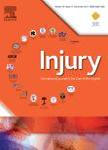版权所有:内蒙古大学图书馆 技术提供:维普资讯• 智图
内蒙古自治区呼和浩特市赛罕区大学西街235号 邮编: 010021

作者机构:Kyushu Univ Dept Mech Engn Nishi Ku 744 Motooka Fukuoka 8190395 Japan Iran Univ Sci & Technol Sch Mech Engn Dept Biomech Tissue Engn & Biol Syst Lab Tehran 16887 Iran
出 版 物:《INJURY-INTERNATIONAL JOURNAL OF THE CARE OF THE INJURED》 (损伤)
年 卷 期:2016年第47卷第5期
页 面:1042-1050页
核心收录:
学科分类:1002[医学-临床医学] 100210[医学-外科学(含:普外、骨外、泌尿外、胸心外、神外、整形、烧伤、野战外)] 10[医学]
基 金:Grants-in-Aid for Scientific Research Funding Source: KAKEN
主 题:Human eye Detonation Dynamic finite element Injury Fluid-structure interaction Finite element modelling
摘 要:Introduction: In spite the fact that a very small human body surface area is comprised by the eye, its wounds due to detonation have recently been dramatically amplified. Although many efforts have been devoted to measure injury of the globe, there is still a lack of knowledge on the injury mechanism due to Primary Blast Wave (PBW). The goal of this study was to determine the stresses and deformations of the human eye components, including the cornea, aqueous, iris, ciliary body, lens, vitreous, retina, sclera, optic nerve, and muscles, attributed to PBW induced by trinitrotoluene (TNT) explosion via a Lagrangian-Eulerian computational coupling model. Materials and methods: Magnetic Resonance Imaging (MRI) was employed to establish a Finite Element (FE) model of the human eye according to a normal human eye. The solid components of the eye were modelled as Lagrangian mesh, while an explosive TNT, air domain, and aqueous were modelled using Arbitrary Lagrangian-Eulerian (ALE) mesh. Nonlinear dynamic FE simulations were accomplished using the explicit FE code, namely LS-DYNA. In order to simulate the blast wave generation, propagation, and interaction with the eye, the ALE formulation with Jones-Wilkins-Lee (JWL) equation defining the explosive material were employed. Results: The results revealed a peak stress of 135.70 kPa brought about by detonation upsurge on the cornea at the distance of 25 cm. The highest von Mises stresses were observed on the sclera (267.3 kPa), whereas the lowest one was seen on the vitreous body (0.002 kPa). The results also showed a relatively high resultant displacement for the macula as well as a high variation for the radius of curvature for the cornea and lens, which can result in both macular holes, optic nerve damage and, consequently, vision loss. Conclusion: These results may have implications not only for understanding the value of stresses and strains in the human eye components but also giving an outlook about the process of PBW